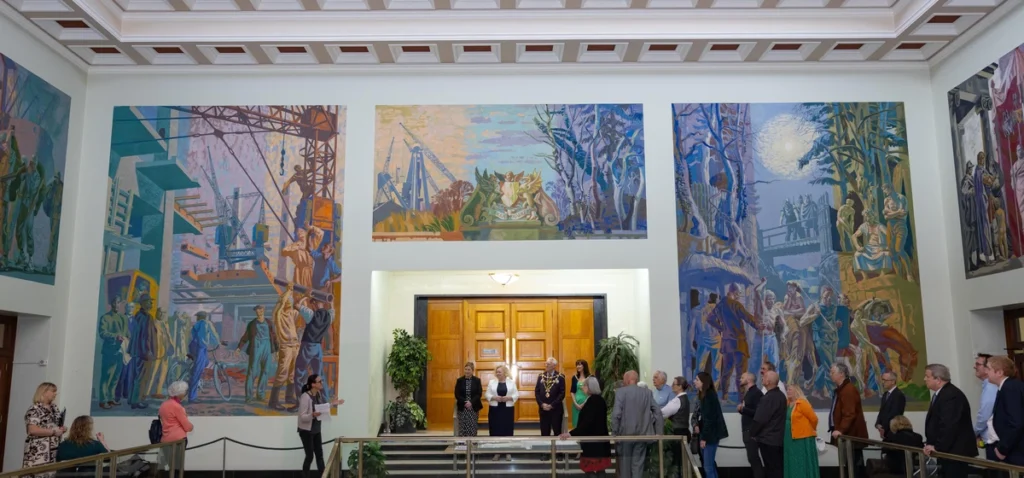A tour and talk about the history of the murals was delivered by Newport’s Museum and Art Gallery manager.
Construction of the Civic Centre started in 1938 but was interrupted by the Second World War. Work resumed in the early 1950s.
In 1960 Newport Borough Council launched a competition to design a series of murals for the Civic Centre’s central hall. The commission was made possible with financial support from the Edwin Austin Abbey Memorial Trust Fund for mural painting in Great Britain.
Hans Feibusch, a German artist who settled in London in 1933 after fleeing the Nazis, was the winner of the competition and started work on the murals in 1961. He was supported by artist Phyllis Bray, who collaborated with him on mural work for over 40 years. While Hans Feibusch concentrated on the composition of figures, Bray focussed on the landscape backdrops. The murals were completed in 1964, the same year as the clock tower.
The murals are designed so each of the four walls of the central hall depicts three scenes. Together they tell the story of the region’s development from Celtic settlements through to the construction of George Street Bridge which opened in 1964.
Moving clockwise around the balcony of the central hall, the designs portray the Roman settlement at Caerleon, the coming of Christianity to Wales, the building of Tintern Abbey, the burning of Newport Castle, the Battle of Agincourt, the surrender of Raglan Castle, the Chartist riot, the city’s steelworks and the arrival of the Americans during World War II.
The murals represent Hans Feibusch at the peak of his artistic career. He was 63 years old when he embarked on this major work which required him to climb high scaffolding to work on the murals.
Each of the panels is almost eight meters high and between four and 4.5 meters wide.
Newport Museum and Art Gallery cares for a collection of Hans Feibusch’s preparatory drawings and sketches for the murals. The collection also includes some of the original cartoons, outline drawings used to trace the life size figures onto the wall.
Councillor Jane Mudd, leader of Newport City Council, said: “The Hans Feibusch murals are not only spectacular works of art, but they are a grand portrayal of the rich history of Newport and our surrounding area. For sixty years they have represented 2000 years of our history and deserve recognition and respect.”

